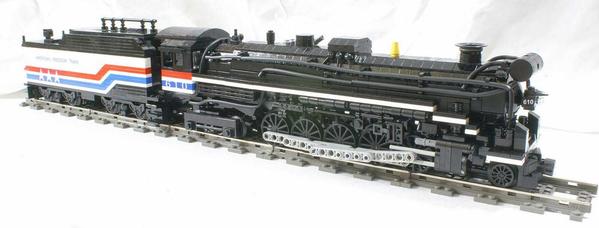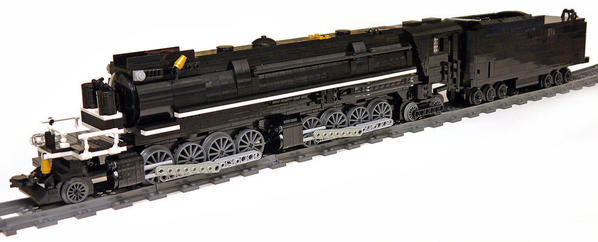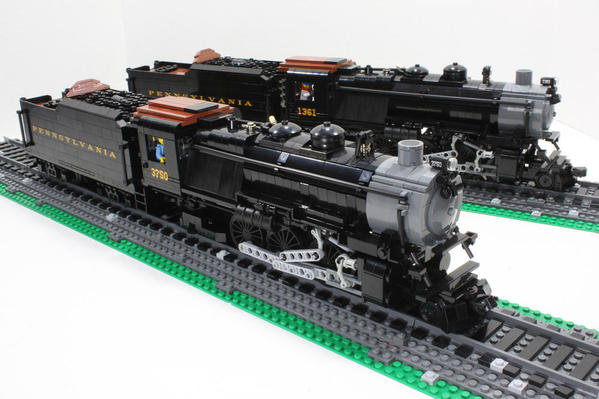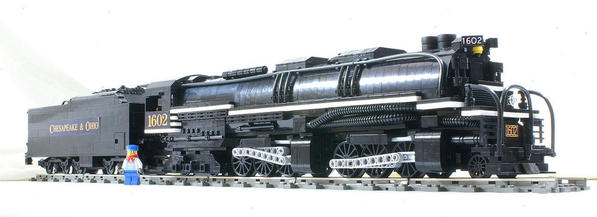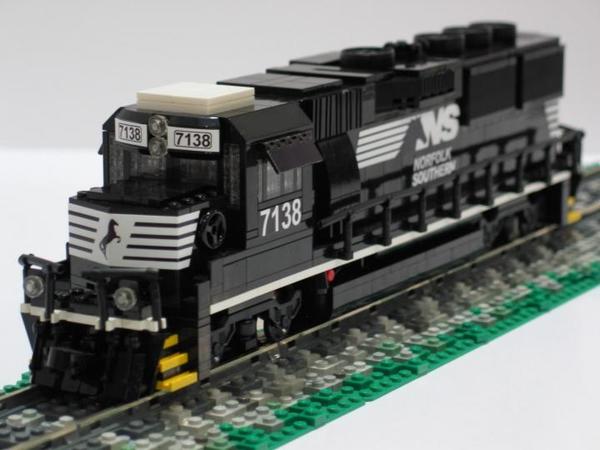Being a business owner and having developed several concepts into products in my career, the strategy of businesses is something that interests me. Having now been back into Lionel trains for a few months after a 30 year absence and the birth of my son, I’ve done some reflecting about Lionel as a company, its direction, and ways it could perhaps grow in the future. As I see it Lionel has a challenging situation, as I see them trying to address three distinct markets:
- Higher-end collectors, with both the interest and means to regularly spend significant money on high-quality pieces with sophisticated electronics. My guess is that this is their most predictable and highest-margin market, the one that’s enabled them to become a going concern again, and therefore one that cannot be ignored. However, it is a not one that is a high-growth market as it does little to bring new customers into model railroading for future sales. Also, judging by some of the comments in this forum this market may be showing signs of being “collected out”.
- Post-War nostalgics who, like myself, are interested primarily in maintaining and building slowly upon their existing conventional layouts with occasional new purchases. This is a very sizable market albeit a very low sales-per-customer market – but one that cannot be ignored lest they disenfranchise vast quantities of consumers who hold PW Lionel dear to their hearts. This too is not a high-growth market as it depends upon existing customers. Also, the glut of product that was sold over the past century and now trades used on eBay makes it unlikely to ever be significant of its own accord.
- New to model railroading consumers, which are coming into model railroading without any experience in it. This potential market is very large and represents huge growth potential, but it is the one that competes with all other hobbies and forms of entertainment across both the “child/toy” and “adult/hobby” segments. This is where RTR sets and lower-priced items are aimed, and if Lionel (and perhaps the hobby in general) wants to substantially grow this is the market that would have to be cracked in a meaningful way.
This third market is the one that I’ve thought about most, and so I tried to find another company that might have been in a similar situation and found success. I believe that company to be LEGO. Think about the similarities between the Lionel and LEGO of 20 years ago:
- Both were companies with a long history and beloved brands, but rather straight-forward products in an approaching age of computerization, sophistication of toys, and explosion of options for consumers.
- Both had modest growth outlooks that depending mostly on those already familiar with their products.
LEGO did something risky and radical – they put a lot of effort behind a succession of products that evolved into MindStorms. This made LEGO both electrical (something Lionel obviously doesn’t have to do) & more importantly expandable and programmable. And this is the genesis for my hypothesis on a strategic direction that would allow Lionel to compete effectively not only MindStorms, but also drones, robotics kits, and more.
What if Lionel made a series of engines, cars, operating accessories, and more whose primary and overriding design objective was to be as easily expandable and programmable as practical?
Let’s explore these two design goals:
Easily Expandable
What if these products came with simple “snap into” power and control busses to which a variety of sensors, audio/sound units, lighting units, drive motors, servo motors, video cameras, and the like could be connected in standardized ways? What if engines and cars came with a frame to which such components could be easily attached and removed ala LEGOs? What if products came with removable shell pieces that could be taken on and off as needed to provide external access or openings for these items? Kids could build their own hybrid engines, cars and accessories from Lionel components or from an aftermarket of pieces that would likely spring to life. There’s already plenty of this that goes on in model railroading as people alter or kitbash things, but that takes a level of skill and dedication that few adults (and fewer children) possess. Put simply, what if we made radical kitbashing standardized and approachable for the mass market, just as LEGO has done for building robots? Such products might not be particularly authentic - but they’d offer a heck of a lot of fun.
Easily Programmable
What if each electromechanical component of engines, cars, and operating accessories (and any expansions added to them) could be easily controlled via a simply programming language paradigm? I’m not talking about CAB-based TMCC/Legacy-style control “programming”, but something much more flexible that can utilize sensor feedback, use IF-THEN-ELSE type logic, and more. I know that the TMCC command set is published, but creating something practical with that information isn’t within the reach or desire of nearly any child and the vast majority of even technology-savvy adults (myself included, an IT professional). What if Lionel offered a software tool that allowed each component in a layout the ability to be easily discovered, referenced, and incorporated into a program that the consumer could create and then run (or have triggered when something occurs)? In the past few years there have been many excellent initiatives to introduce children to coding (visit code.org for one of the biggest). The success of the Raspberry Pi and Arduino platforms in the toy/hobby market has shown there is now a sizeable market for this type of product which probably didn’t exist 10 years ago. And Lionel has something other hobbies don’t have: an existing, big, physical ecosystem of products that such programming could be made to control. What’s more attractive to a child: building a robot that runs aimlessly around the floor, or controlling a large consist that interacts with accessories in a manner they specified? What’s more approachable for a child: trying to fly a drone outdoors (weather and FAA regulations permitting), or running a train 365 days a year on their living room floor?
I do not underestimate the level of resources that would be necessary to implement such a new paradigm– much less market, distribute, and support it. However, Lionel has a set of significant advantages that could be leveraged:
- The shift to a digital control paradigm has already taken place over the last 20 years. The technology for constant power supply, digital control communication, and individually addressable components already exists in the TMCC and Legacy platforms.
- Lionel already has the supply chain relationships necessary to manufacture these types of products.
- Lionel has a brand that carries weight in the consumer marketplace.
- Lionel has a nationwide network of dealers and wouldn’t be burdened with building one from scratch.
Of course, there’s more to LEGO’s success than Mindstorms. They’ve been very effective in their brand marketing by creating sets that tie into architecture, movies, and more. They’ve built upon that to create video games, shows, and even a movie. They have brand ambassadors that spread the word in influential venues such as the SXSW festival. But these didn’t come all at once; they slowly built one success upon another over years to create a juggernaut that is now unrivaled in the toy industry. Lionel can afford to play the long game, but any long game must start with a long-term direction. Who knows? Perhaps Lionel and LEGO could partner on such a platform, further enhancing both brands in the process.
I won’t pretend to tell the executives at Lionel how to run their business. But I do offer this as an open letter to them and other train enthusiasts as the start of a conversation – one that could perhaps lead to a wider-spread love by children and adults of trains in general, and Lionel in specific, which would rival the Post-War era.




